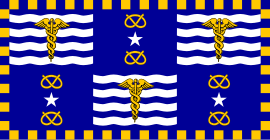Our website is made possible by displaying online advertisements to our visitors.
Please consider supporting us by disabling your ad blocker.
City of Brisbane
| City of Brisbane Queensland | |||||||||||||||
|---|---|---|---|---|---|---|---|---|---|---|---|---|---|---|---|
 Location within South East Queensland | |||||||||||||||
 | |||||||||||||||
| Coordinates | 27°28′S 153°07′E / 27.47°S 153.12°E | ||||||||||||||
| Population | 1,242,825 (2021 census)[1] (1st) | ||||||||||||||
| • Density | 925.62/km2 (2,397.34/sq mi) | ||||||||||||||
| Established | 30 October 1924 | ||||||||||||||
| Area | 1,342.7 km2 (518.4 sq mi)[2] | ||||||||||||||
| Time zone | AEST (UTC+10:00) | ||||||||||||||
| Lord Mayor | Adrian Schrinner (LNP) | ||||||||||||||
| Council seat | Brisbane CBD (City Hall) | ||||||||||||||
| Region | South East Queensland | ||||||||||||||
| State electorate(s) | Algester, Aspley, Bulimba, Chatsworth, Clayfield, Cooper, Everton, Ferny Grove, Greenslopes, Inala, Lytton, Maiwar, Mansfield, McConnel, Miller, Moggill, Mount Ommaney, Nudgee, Sandgate, South Brisbane, Stafford, Stretton, Toohey | ||||||||||||||
| Federal division(s) | Brisbane, Blair, Bonner, Dickson, Griffith, Lilley, Moreton, Oxley, Petrie, Rankin, Ryan | ||||||||||||||
 | |||||||||||||||
| Website | City of Brisbane | ||||||||||||||
| |||||||||||||||
The City of Brisbane is a local government area (LGA) which comprises the inner portion of Greater Brisbane, the capital of Queensland, Australia. Its governing body is the Brisbane City Council.
The LGAs in the other mainland state capitals (Sydney, Melbourne, Perth and Adelaide) are generally responsible only for the central business districts and inner neighbourhoods of those cities. However, the City of Brisbane administers a significant portion of the Brisbane Greater Capital City Statistical Area (GCCSA), accounting for just under half its population. As such, it has a larger population than any other local government area in Australia.[3] The City of Brisbane was the first Australian LGA to reach a population of more than one million.[4] Its population is roughly equivalent to the populations of Tasmania, the Australian Capital Territory and the Northern Territory combined. In 2016–2017, the council administered a budget of over $3 billion,[5] by far the largest budget compared to those of the City of Sydney and City of Melbourne LGAs.[6][7]
The City derives from cities, towns and shires that merged in 1925. The main offices and central library of the council are at 266 George Street, also known as Brisbane Square. Brisbane City Hall houses the Council Chamber, the offices of the Lord Mayor and Deputy Mayor, meeting and reception rooms and the Museum of Brisbane.
In the 2021 census, the City of Brisbane had a population of 1,242,825 people.[1]
- ^ a b Cite error: The named reference
Census2021was invoked but never defined (see the help page). - ^ "3218.0 – Regional Population Growth, Australia, 2017-18: Population Estimates by Local Government Area (ASGS 2018), 2017 to 2018". Australian Bureau of Statistics. Australian Bureau of Statistics. 27 March 2019. Archived from the original on 27 March 2019. Retrieved 25 October 2019. Estimated resident population, 30 June 2018.
- ^ "Table 1: Population growth and turnover in Local Government Areas (LGAs), 2006 to 2011". Australian Bureau of Statistics. 25 November 2009. Retrieved 10 August 2015.
- ^ Hiroaki Suzuki; Arish Dastur; Sebastian Moffatt; Nanae Yabuki; Hinako Maruyama (2010). Eco2 Cities: Ecological Cities as Economic Cities. World Bank. p. 213. ISBN 978-0-8213-8046-8. Archived from the original on 17 December 2010. Retrieved 12 March 2011.
- ^ "Council Annual Plan and Budget 2016–17". Brisbane City Council. 2 June 2017. Archived from the original on 19 June 2017. Retrieved 19 June 2017.
- ^ "City of Sydney Annual Report General Purpose Financial Statements 2016/17" (PDF). City of Sydney. pp. 4–5. Retrieved 4 May 2024.
- ^ "Annual Plan and Budget 2016-2017" (PDF). City of Melbourne. pp. 18–20. Retrieved 4 May 2024.
Previous Page Next Page


